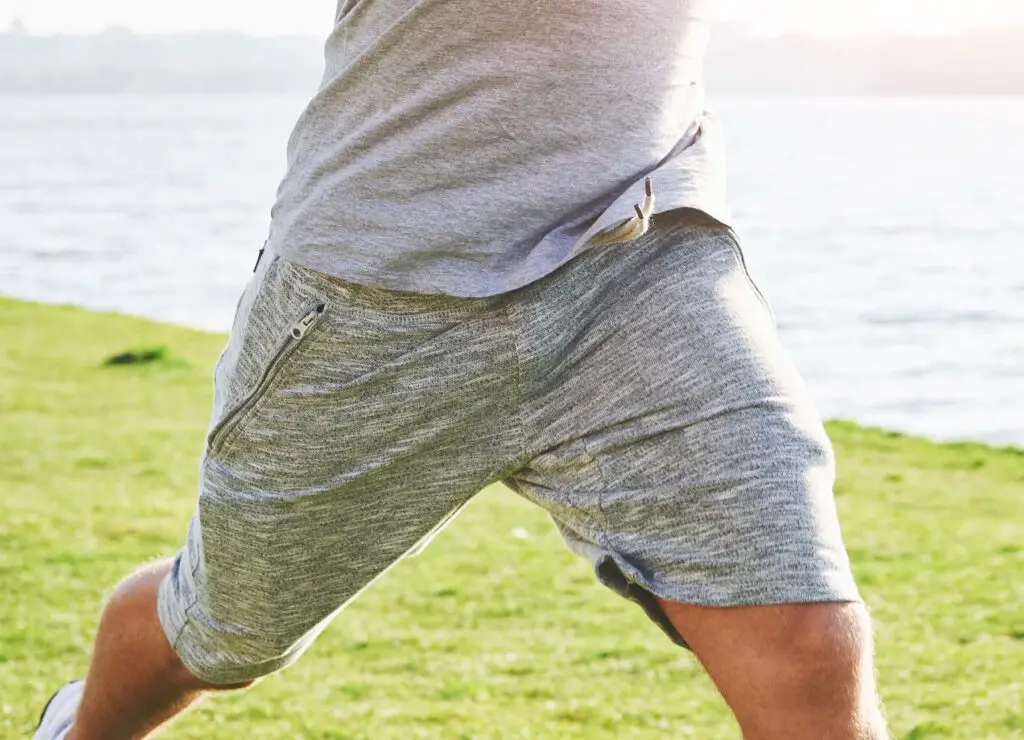
Running is an exhilarating activity that brings numerous health benefits but can also come with its own challenges. One such challenge that many runners face, whether they’re novices or seasoned marathoners, is chafing. This unpleasant sensation can turn a joyful run into a discomforting ordeal. But don’t worry; we’re here to help you understand how to avoid chafing while running.
Chafing, a common issue among runners, is caused by repeated skin-to-skin or skin-to-clothing contact. It can occur anywhere on the body, but it’s especially common in areas like the thighs, armpits, and nipples. The good news is that with the right knowledge and preventative measures, you can keep chafing at bay and focus on what really matters – your run. So, let’s dive into the world of running and chafing and explore how to avoid chafing while running.
Understanding Chafing
Chafing is a skin irritation that occurs when there’s constant friction between your skin and clothing or even between skin surfaces. It’s a bit like nature’s way of reminding us that friction isn’t always our friend, especially when it comes to running.
When you’re running, your body is in constant motion. This means that your clothing and your skin are constantly rubbing against each other. Over time, this friction can cause the skin to become irritated, leading to the uncomfortable condition we know as chafing.
Chafing is a common issue for runners, and it’s easy to see why. When pounding the pavement or hitting the trails, your body is in constant motion. Your thighs might rub together, or your arms might brush against your sides. Even your clothing can contribute to chafing, especially if it’s loose or made from materials that don’t wick away sweat.
There are several factors that can contribute to chafing. One of the main culprits is clothing. If your clothes are too loose, they can move around much, causing more friction. On the other hand, clothing that’s too tight can dig into your skin, causing irritation. The material of your clothing also matters. Synthetic materials that wick away sweat are generally better for preventing chafing than cotton, which absorbs moisture and can become rough when wet.
Weather can also play a role in chafing. Hot, humid weather can make you sweat more, which can increase friction. On the other hand, cold, dry weather can make your skin more susceptible to irritation.
Skin sensitivity is another factor to consider. Some people’s skin is simply more prone to irritation than others. If you have sensitive skin, you might find you chafe more easily than others.
Common Areas Prone to Chafing
Chafing can occur in various parts of the body. Still, a few areas are particularly prone to this pesky problem when running. Let’s take a closer look at these common chafing hotspots and why they’re often affected.
Thighs
The thighs are a common area for chafing, especially for runners. As you run, your thighs rub against each other, which can lead to friction and, eventually, chafing. This is particularly true for long-distance runners or those running in hot and humid conditions where sweat can exacerbate the problem.

Nipples
Yes, you read that right. Nipple chafing, often referred to as “runner’s nipple,” is a common issue, particularly for men. It occurs when the nipples rub against a shirt, especially if it’s wet from sweat or rain. Over the course of a long run, this can cause significant discomfort and even bleeding.
Groin
Due to its sensitivity and high level of movement during running, the groin area is another common area for chafing. Both the skin-on-skin and skin-on-clothing friction can lead to chafing in this area.
Armpits
With each stride and swing of the arm while running, the skin of the armpit can rub against itself or the fabric of your clothing, leading to potential chafing.
Understanding where chafing most commonly occurs can help you take preventative measures, like applying anti-chafing creams or wearing moisture-wicking clothing, to these areas before you start your run.
Clothing and Gear
When it comes to preventing chafing while running, your clothing and gear play a crucial role. Let’s delve into how the right choices can make a world of difference.
Clothing
The first line of defence against chafing is your clothing. Well-fitting clothes are essential. If they’re too loose, they can move around and cause friction against your skin. If they’re too tight, they can dig into your skin and cause irritation. The key is to find clothing that fits just right, snug but not restrictive.
The material of your clothing also matters. Moisture-wicking fabrics are your best friend when it comes to preventing chafing. These materials, such as synthetic blends like polyester or nylon, pull sweat away from your skin, keeping you dry and reducing the risk of chafing. Conversely, cotton tends to absorb moisture and can become rough when wet, which can increase friction.
Running Accessories
Running accessories, like belts, armbands, and backpacks, can also contribute to chafing if not properly fitted. These items should be snug enough to stay in place without moving around excessively but not so tight that they dig into your skin. Adjustable straps can be particularly helpful in getting the right fit.
Types of products for each part of the body
Upper Body
Opt for shirts made from synthetic, moisture-wicking materials for the upper body to keep your skin dry. Avoid cotton as it retains moisture and can cause chafing. For women, a well-fitted sports bra is crucial. It should be snug but not too tight and be made of breathable, moisture-wicking material. For men experiencing nipple chafing, consider using nipple guards or applying some petroleum jelly before running.
Lower Body
When it comes to your lower body, running shorts or leggings made from synthetic, moisture-wicking materials are the best choice. Again, avoid cotton. For men, boxer briefs made from moisture-wicking material can help prevent chafing in the groin area. For women, running shorts or leggings with a built-in liner can provide extra protection.
Feet
Your feet are another area to consider. Moisture-wicking socks can help keep your feet dry and prevent blisters, which are a form of chafing. Synthetic materials or wool work well. Avoid cotton socks as they can retain moisture.
Accessories
If you’re using accessories like running belts or armbands, ensure they’re properly fitted. They should be snug enough to stay in place but not so tight that they dig into your skin. Also, consider the material of these accessories. Those made with soft, breathable materials will be less likely to cause chafing.
Personal Care
Personal care plays a pivotal role in preventing chafing while running. It’s not just about what you wear but also about how you take care of your skin. Let’s delve into some personal care tips that can help keep chafing at bay.
Hygiene and Skin Care
Maintaining good hygiene is crucial in preventing chafing. Regularly cleaning your skin, especially after a run, can help remove sweat and bacteria that can exacerbate skin irritation. Using a gentle, fragrance-free soap can help keep your skin clean without causing additional irritation.
Keeping your skin moisturized is also important. Dry skin can be more prone to damage and chafing, so using a good moisturizer can help keep your skin healthy and resilient. However, avoid applying moisturizer immediately before a run, as it can make your skin slippery and lead to more friction.
Lubricants and Powders
Various products on the market are designed to reduce friction and keep your skin dry, which can help prevent chafing. Lubricants, such as petroleum jelly or specialized anti-chafing creams, can be applied to areas prone to chafing to reduce friction. These create a barrier between your skin and your clothing or between skin surfaces.
Powders, like talcum powder or cornstarch, can help absorb sweat and keep your skin dry. These can be particularly useful in hot, humid conditions where you might be sweating more.
Remember, prevention is key when it comes to chafing. Incorporating these personal care tips into your routine can help protect your skin and make your runs more comfortable. After all, running is about enjoying the journey, not dealing with the discomfort of chafing.
Treating Chafing
Despite our best efforts, chafing can sometimes still occur. But don’t worry. It’s not the end of the world, and there are several steps you can take to treat chafed skin and get back on your feet.
Cleaning
The first step in treating chafed skin is to clean the area gently. Use warm water and a mild, fragrance-free soap to clean the skin, then pat it dry with a clean towel. Avoid rubbing the area, as this can cause further irritation.
Applying Ointments
Once the area is clean, apply a soothing ointment or cream. Products containing ingredients like aloe vera, vitamin E, or zinc oxide can help soothe the skin and promote healing. Avoid using products that contain potential irritants like fragrances or alcohol.
Natural Healing
After cleaning the area and applying an ointment, it’s important to give your skin time to heal naturally. This means avoiding activities that could cause further friction in the affected area until the skin has fully healed. If you must continue running, consider using protective dressings or bandages to protect the chafed area.
When to Seek Medical Attention
While most cases of chafing can be treated at home, there are times when it’s best to seek medical attention. If the chafed skin is not improving after a few days of home treatment, or if you notice signs of infection like increased redness, swelling, pus, or a fever, it’s time to see a healthcare professional.
Chafing can be a nuisance, but with the right treatment, it doesn’t have to sideline your running routine. Remember, listening to your body and giving it the care it needs is important. After all, a happy runner is a healthy runner.
Conclusion
Running is a journey, one that can be filled with exhilarating highs and challenging lows. One such challenge many runners face is chafing, an uncomfortable condition caused by friction. But with the right knowledge and preventative measures, you can keep chafing at bay and focus on the joy of running.
We’ve explored what chafing is and why it’s a common issue for runners, discussing factors that contribute to chafing, such as clothing, weather, and skin sensitivity. We’ve identified the common areas where runners experience chafing, including the thighs, nipples, groin, and armpits.
Preventing chafing is a multi-faceted approach. It involves choosing well-fitting, moisture-wicking clothing and properly fitting running accessories. Personal care is also crucial, with good hygiene and skin care practices being key. The use of products like lubricants and powders can also help reduce friction and keep skin dry.
If chafing does occur, it’s important to know how to treat it. This includes cleaning the chafed area, applying soothing ointments, and allowing the skin to heal naturally. And remember, if chafing doesn’t improve or if signs of infection appear, it’s important to seek medical attention.
Running should be about the joy of the journey, not the discomfort of chafing. So, take these preventative measures, listen to your body, and keep your focus on the road ahead. Happy running!

